Spectera on the dance floor

Danish EDM sensation Infernal puts Spectera through its paces
Wedemark/Copenhagen, April 2025 – Ever since Infernal’s foundation in 1997, the EDM duo of Lina Rafn and Paw Lagermann have been fascinating their audiences, particularly when they headline the biggest Danish festivals with a full band line-up. They have an endless number of floor fillers and chart-topping bangers under their belt, such as ‘From Paris to Berlin’, which has become an iconic party anthem across the globe. The pair are known for their energetic live performances, strong stage presence and unique visual expression. With their latest release ‘Don’t Play Safe’, they have just made it to No. 1 in the Danish Club Charts again. As part of a long-standing tradition, Infernal kicked off the 2024 Holiday Season with sold-out shows at Copenhagen’s No. 1 live music venue ‘VEGA’. As their monitor engineer Christian Almer also happens to work for Sennheiser, he brought Infernal a Spectera system to try out for their wireless monitoring.
Almer has a background in system design and live sound engineering, and has spent more than a decade working for Sennheiser. For much of that time, he has served as a Technical Application Engineer, and was involved in productions such as the Eurovision Song Contest, before focusing on the installation market.
Almer was thrilled when he was asked to become part of the Spectera Pioneer Program: “I’ve worked with wireless microphones and in-ears for many years, and Sennheiser Spectera is an extremely groundbreaking technology. On the RF side alone, it solves so many of the challenges that RF engineers and antenna distribution designers have faced for years.”
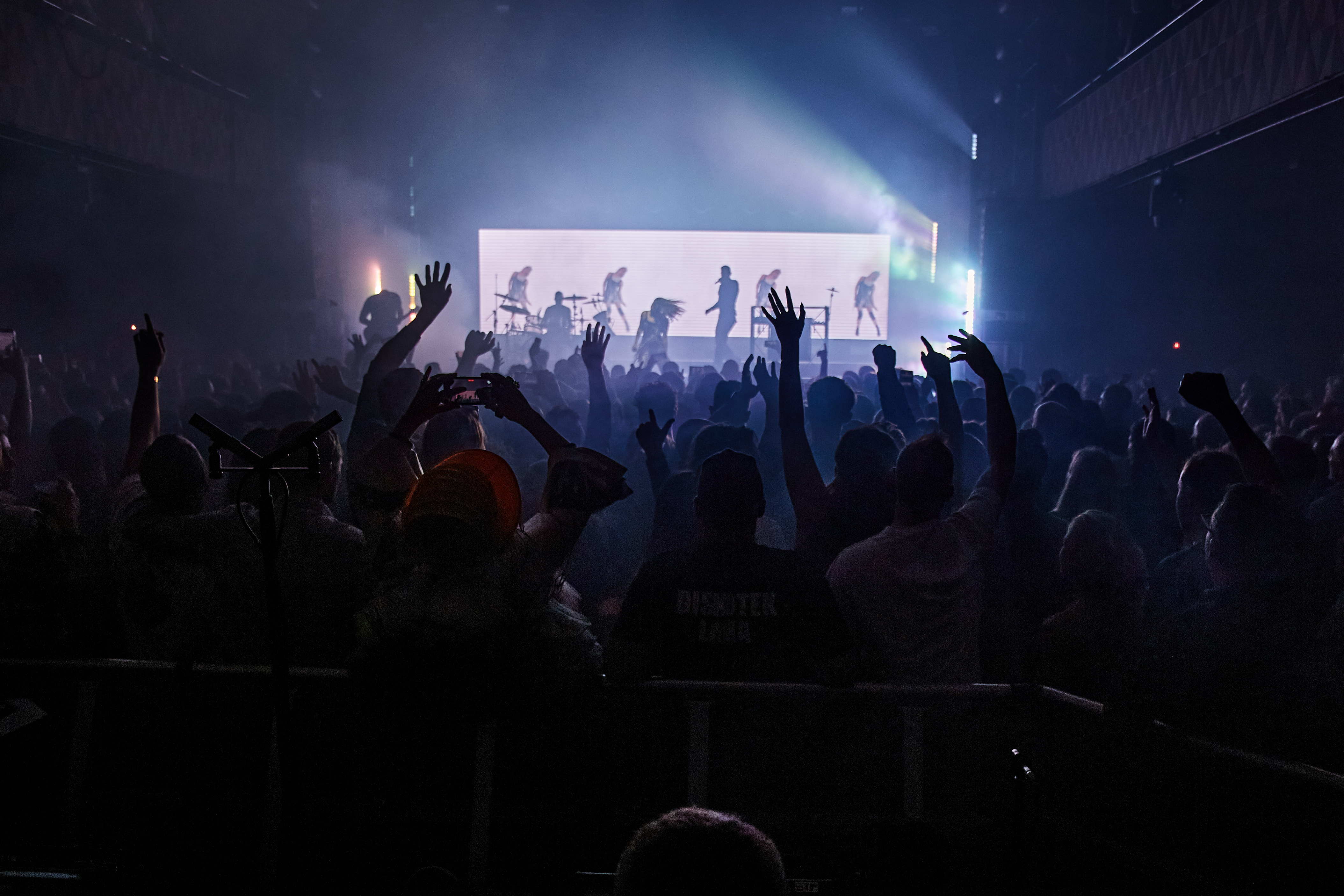
Photo credit Noemi Kapusy
Almer employed Spectera as an in-ear monitoring system and, besides the shows at VEGA, tested Sennheiser’s Spectera at eight private events. For all concerts, he connected one or two antennas to the base station, with the antennas placed near the stage, in order to compare all range tests directly against Infernal’s current set-up. “As part of the Pioneer Program, I wanted to test everything. During my frequency coordination I often deliberately found two TV channels with very strong signals and placed my wideband channel right between them.”
“It actually expands my experience of artistic freedom”
Both Lina Rafn and Paw Lagermann were pleasantly surprised by the Sennheiser Spectera system. Lagermann comments: “I am excited by the top-end clarity and the full stereo perspective – it really feels fluid and endless. No annoying break-ups. It never sounds ‘squeezed’ or ‘squashed’. There’s no point where the high frequencies start to fall apart. It just sounds great.”
Rafn shares: “I love the feature where I can click and see exactly what my volume is set to. The more I use it, the more confident I become. I’m starting to recognize the difference between the volume I use at soundchecks versus how high I need to go during a show – because it’s not the same. I do have to get used to the buttons being placed differently, but what I thought would be annoying hasn’t been a problem at all. The audio is noticeably better, and the mix seems much more ‘open’ and that makes it much easier for me to be dynamic and playful in my vocal delivery. It actually expands my experience of artistic freedom.”
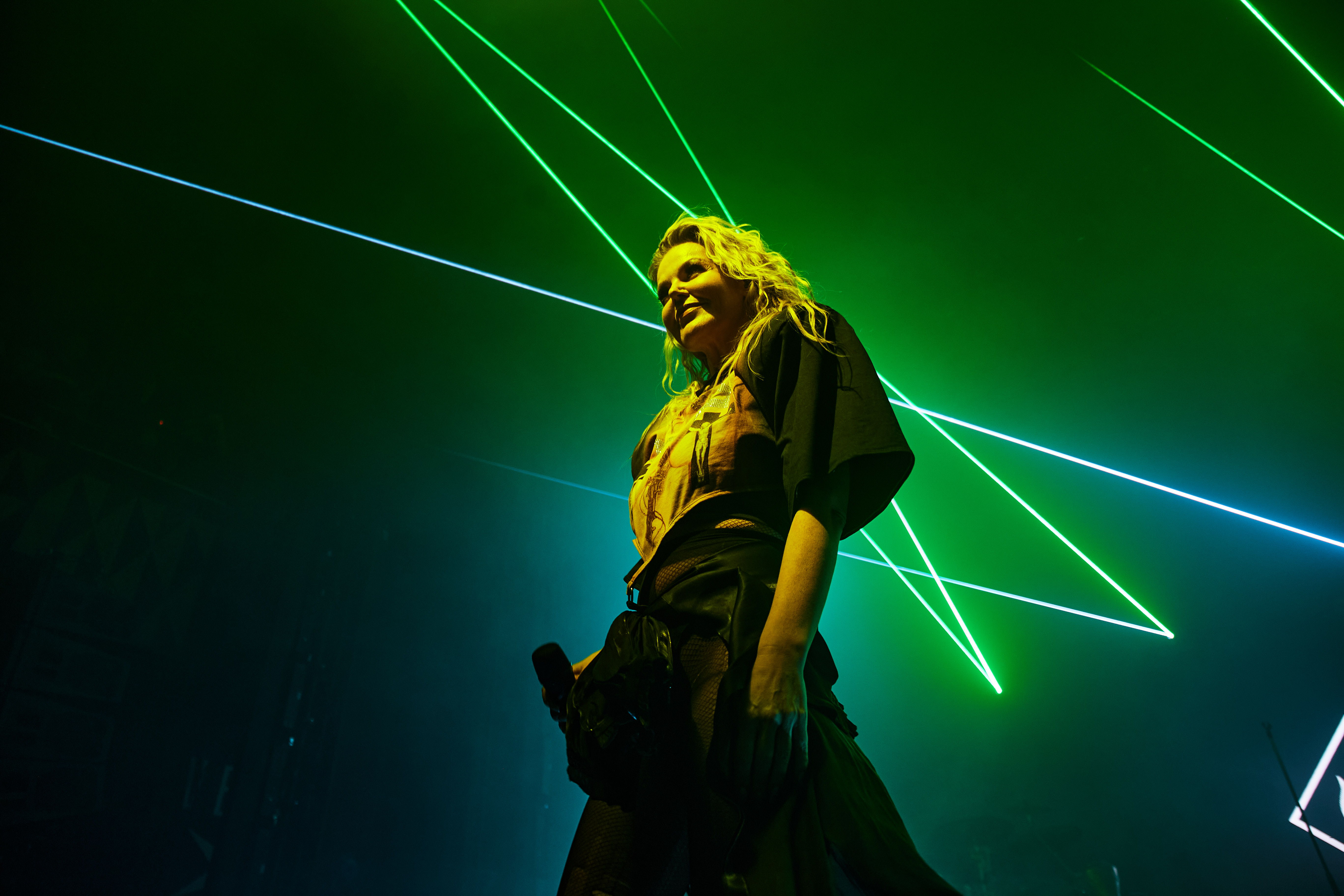
Lagermann agrees: “My vocal comes through much more clearly. My S’s and F’s are more distinct and sound cleaner because they aren’t getting squashed by the lack of performance in the higher frequencies.” Rafn adds: “I also feel like mentioning the range of the system. It’s such a huge plus that I can be standing somewhere backstage and still do a quick soundcheck together with my monitor engineer by the stage. That really means a lot to me, and I find the operating range to be significantly better than any system we’ve previously worked with.”
A walk-test takes Almer onto the streets of Copenhagen
Almer shares some impressions on the range of the system: “For the shows at the VEGA, I was a bit behind schedule during load in, so I only managed to set up a single antenna for the soundcheck - and again, being part of the Pioneer Program, I wanted to test with only one antenna. Spectera still worked flawlessly. For the show, though, I added a second antenna to be on the safe side. Out of curiosity, I did a walk-test, and I was blown away. I walked two floors down, through an elevator, and out onto the main street – still with 100% perfect audio. No dropouts. No artifacts. No degradation of quality – just like being on stage. Of course, at that distance I could force a dropout by completely covering the beltpack, but that would happen on any system. The big game changer with Spectera is that I could easily have extended the coverage outside with a 100-meter Ethernet cable and another antenna – something which is not possible with a conventional in-ear system.
“Setting up multi-zone coverage with traditional in-ear systems is usually complex and expensive and is not at all comparable to a multi-zone antenna solution for wireless microphones as, with the sum of a multichannel in-ear system, power levels must be considered throughout all the components. But with Spectera it has become as easy as plugging in an Ethernet cable. In fact, this is such a big shift and so easy that I fear that those who make a living from complex antenna solutions and RF distribution networks might speak negatively about the system, because Spectera has the potential to disrupt their entire business model.”
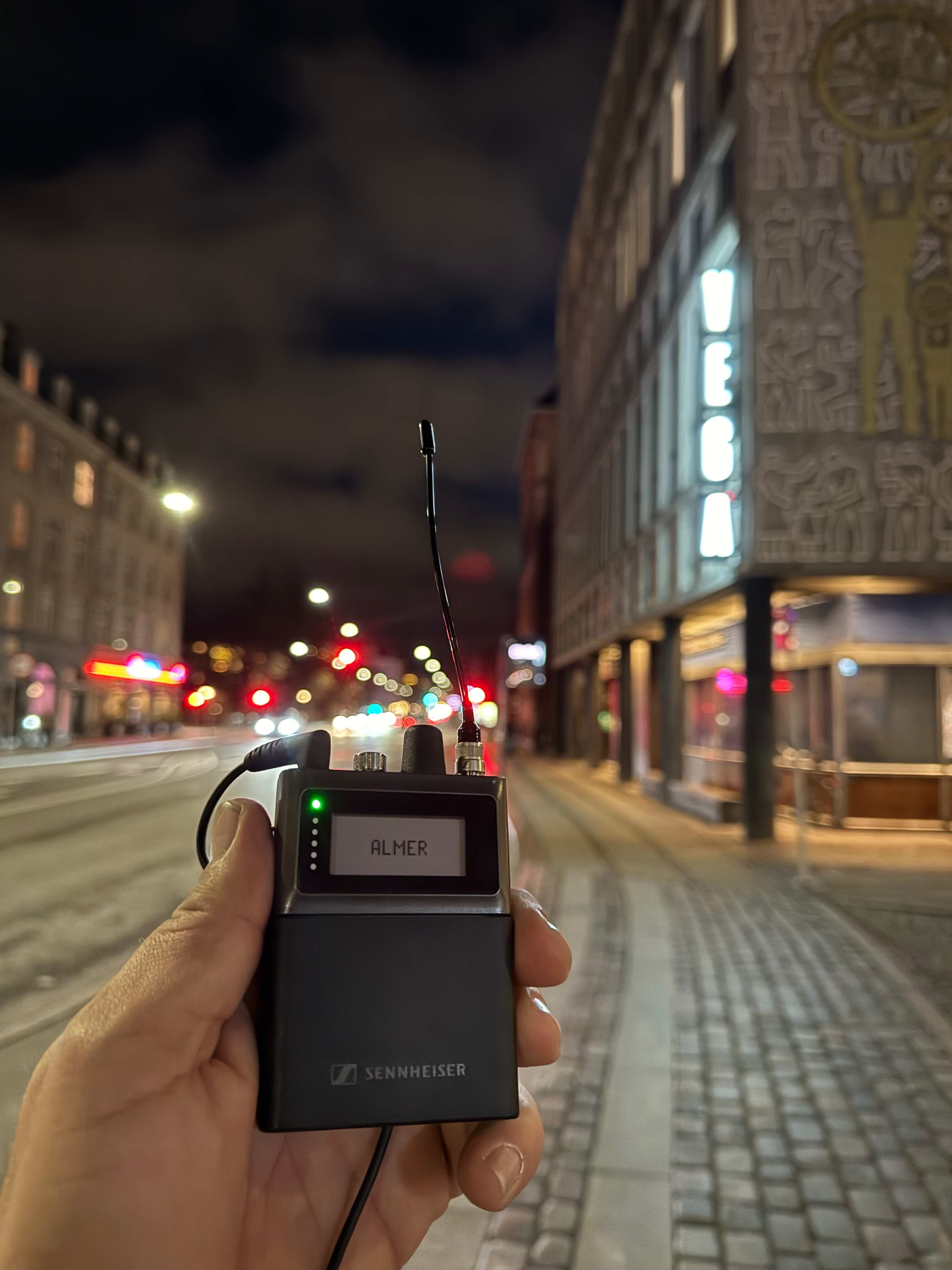
A party you won’t forget
Infernal’s VEGA shows are a colourful high-energy experience; from the moment the lights are dimmed and the first beat drops, you can feel the electric atmosphere in the venue. Infernal’s core, Lina Rafn and Paw Lagermann, take the stage with a presence and charisma that immediately captivates the audience, who immerse themselves in the powerful electronic pop music and impressive visual setup. LED screens, lighting design, the creative stage costumes – all come together to create a true party vibe. Every song is delivered with energy, attitude, and a strong connection to the crowd, making it impossible not to get swept away. Infernal’s shows aren’t just a concert – they are an explosive and euphoric experience where music, visuals and performance blend into a party you won’t forget.
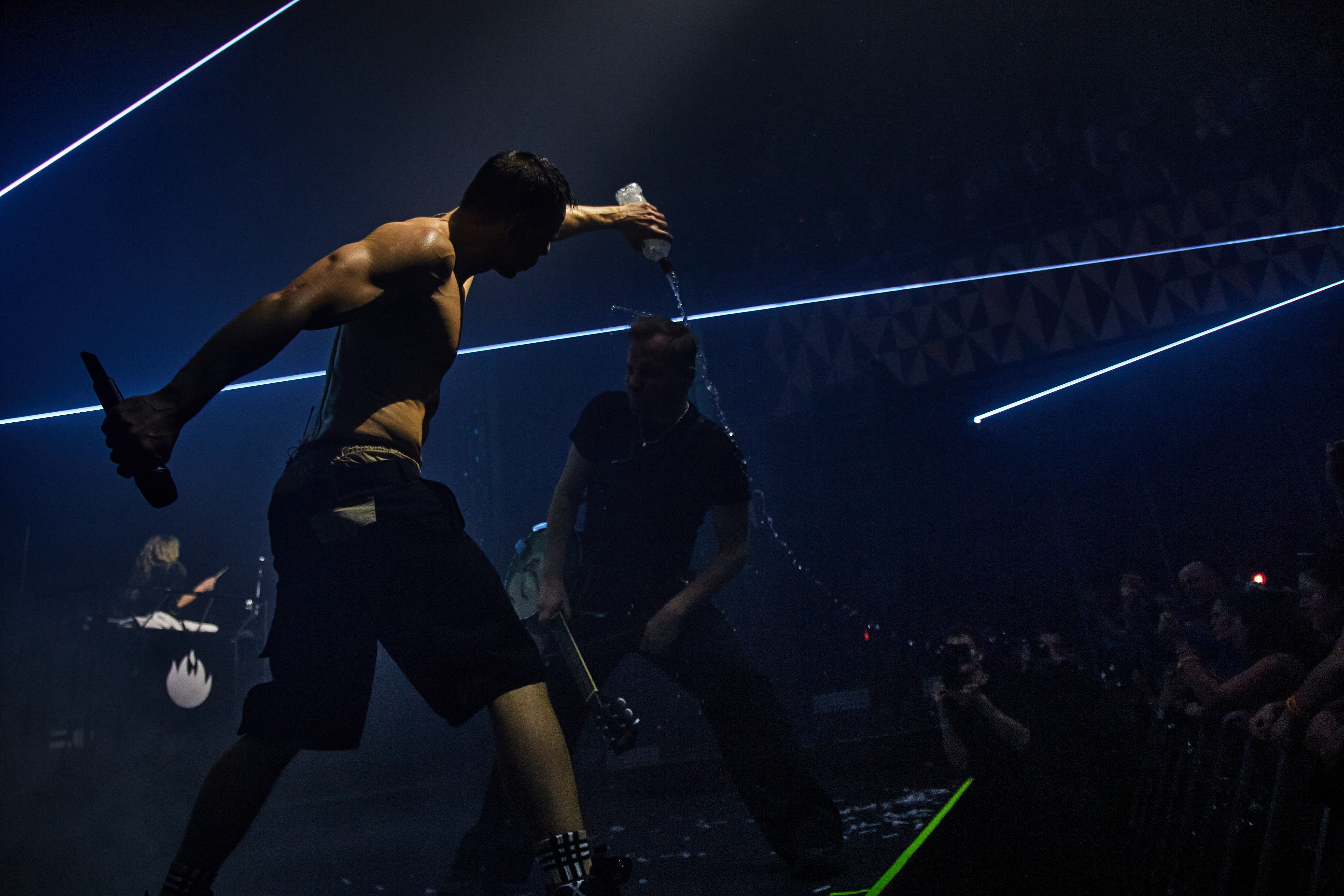
Keeping the connection
Often, a monitor engineer will be positioned at the side of the stage to keep an eye on what’s going on. However, due to the visual concept Infernal wanted to achieve at the VEGA, all equipment was hidden behind the large LED screen that served as the show’s backdrop. This made eye contact with the artists on stage impossible for Almer. Still, he must be ready to step in if something goes wrong, for example, if an in-ear beltpack is dropped and the headphone jack gets pulled out. But that will become a smaller issue in the future with Sennheiser’s Spectera if you ask Infernal’s monitor engineer:
“It is the brand-new world of in-ear monitoring. Thanks to the bidirectional communication, I now get a lot of key information directly on my computer – like link status, battery status, if a headphone is connected or not, and volume levels. I can set maximum and minimum volume limits on the individual Spectera packs to protect the artist’s hearing and avoid confusion if the system seems off. I can even help adjust the artist’s volume remotely, which is handy if the beltpack is hidden under a tight dress.”
Almer also has some feedback to the developers and shares a few of his ideas. “For the future, I’d love a volume recall function in the software to ensure levels on the Spectera SEK packs are set correctly before each show. It could also be awesome to have a log feature to track in-ear levels throughout the performance to evaluate how the artist is adjusting levels during different songs and from that optimize the in-ear mix. And then it could also be interesting if Spectera is capable of transmitting signals like MIDI from the keytar.”
Almer continues with his thoughts on the beltpack where the volume control is now an encoder, and no longer a potentiometer: “I think many bands will be hesitant to switch away from a potentiometer – they're used to the feel of turning it on and setting volume by position, like 12 or 2 o’clock. This muscle memory is deeply ingrained after years of performing live on stage. But I’m confident that fear will fade quickly when they try it out and realize the benefits. Volume is adjusted much more precisely and delicately in 0.5 dB steps, and the level shows on the display with a press on the encoder. Most importantly, Spectera makes it easy for me as a monitor engineer to know what is going on and I can support the artist much better.”
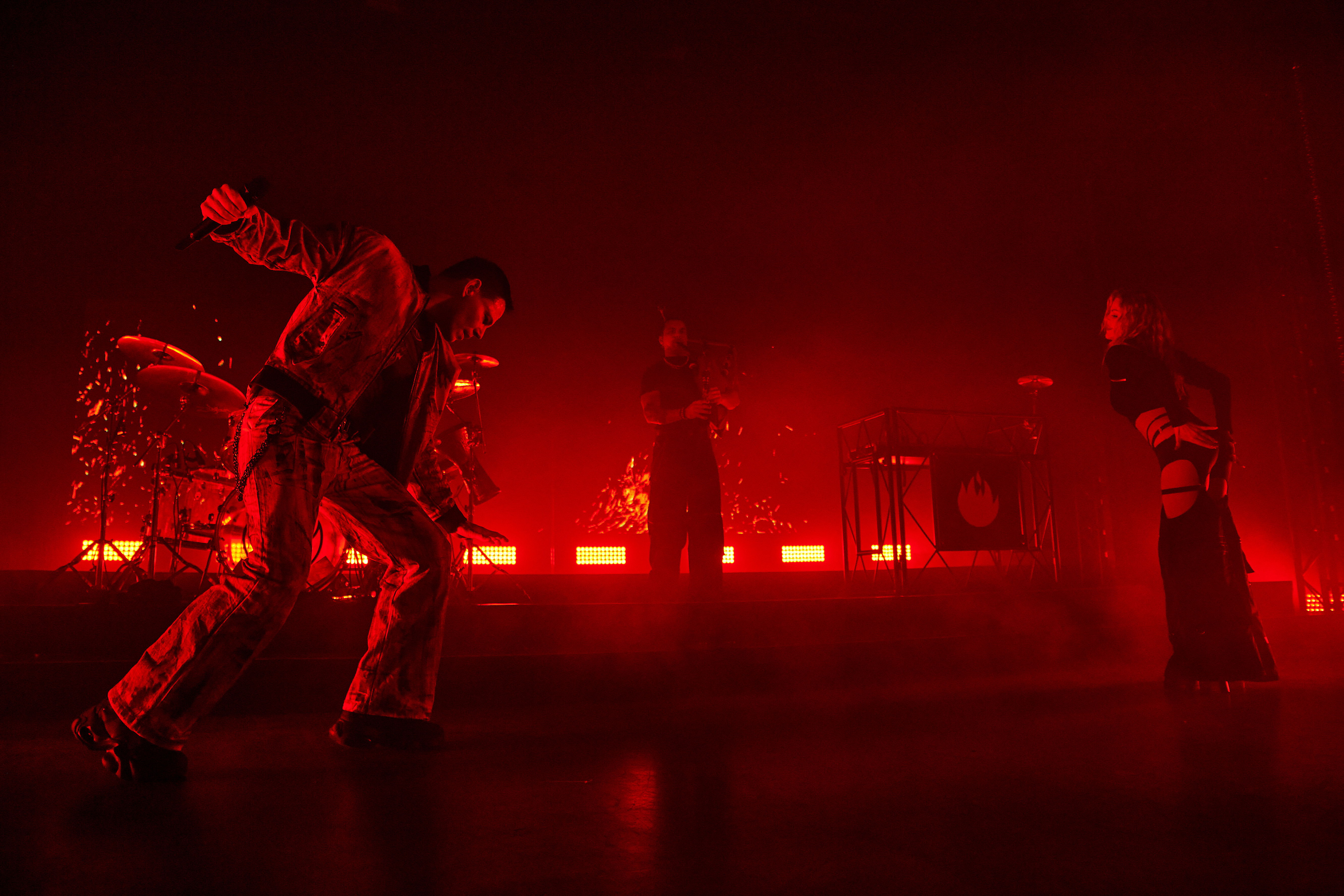
Infernal uses four channels of Sennheiser Digital 6000 for vocals, two main and two backup. They also use six channels of Sennheiser’s EW-DX for acoustic guitar, electric guitar, bagpipes, a hockey helmet with a built-in mic for a vocoder, a marching drum, and a harmonica. Eight channels of Sennheiser ew G4 IEMs are used for the band, monitor cue, and communication with the tour manager. The crew uses a separate system with four channels of ew 300 G3 microphones with PTT switch for intercom, as well as an ew 300 G3 IEM transmitter with multiple in-ear packs for the music mix and crew communication.
“I have been running the band's own Sennheiser G4 in-ear system in parallel at every show. Spectera is a new and exciting technology, but still very different from what I’m used to and what the band is used to, so having the G4 running alongside has just been reassuring. However, I never doubted Spectera, and the G4 never got used,” says Almer. “On the contrary, at one show, I was frustrated that I didn’t have more SEK beltpacks with me. I remember thinking: ‘To cover this venue with RF would be so much easier with Spectera’. If frequencies need to be changed, I no longer have the work of re-synchronizing or pairing all my transmitters and portable receivers before a show. Once all SEK beltpacks are paired up with the base station during the first configuration and then assigned to one of the system’s two wideband channels, they automatically follow along – even if I need to switch to a different TV channel at a new location.”
The man with the tall hat
"I found the tall hat on stage after one of our shows. At the following show I put it on just as a joke, but quickly realized that the band could easily spot me if they needed my attention – even when I was surrounded by other people at the side of a dark stage. Today, the tall hat has become part of the show."
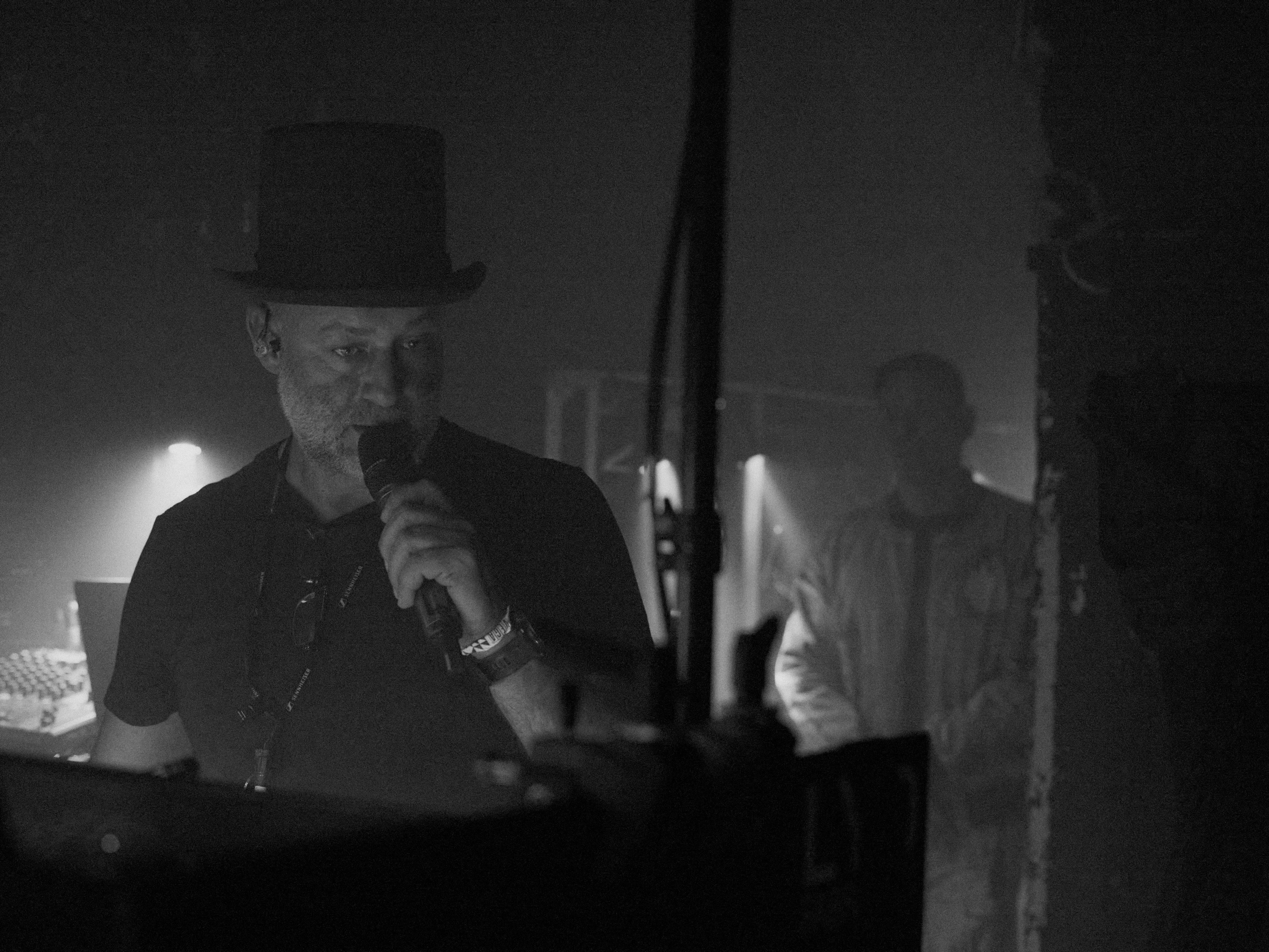
Almer in fact wears many hats during the show. As the monitor engineer, he also takes on the role of RF technician, ensuring stable operation of the wireless microphones and in-ears. He is responsible for running the band’s show in Ableton Live, delivering timecode to the lighting and video production, and makes sure Lagermann’s keytar and wireless MIDI work properly. As the central point of communication on stage between FOH, lighting, video, and the tour manager, he is the show caller and informs the band via their in-ears about how much time is left before the show starts. “Once everyone has confirmed they are STAND-BY, I give the final message to the band that the show begins - and hit play in Ableton Live.”
(Ends)
The high-resolution images accompanying this media release plus additional photos can be downloaded here. Please make sure to include the respective photo credit.
The band videos can be downloaded here in various formats. Please credit to Loud Colors.
Interested in the 2025 shows? Please click here.


